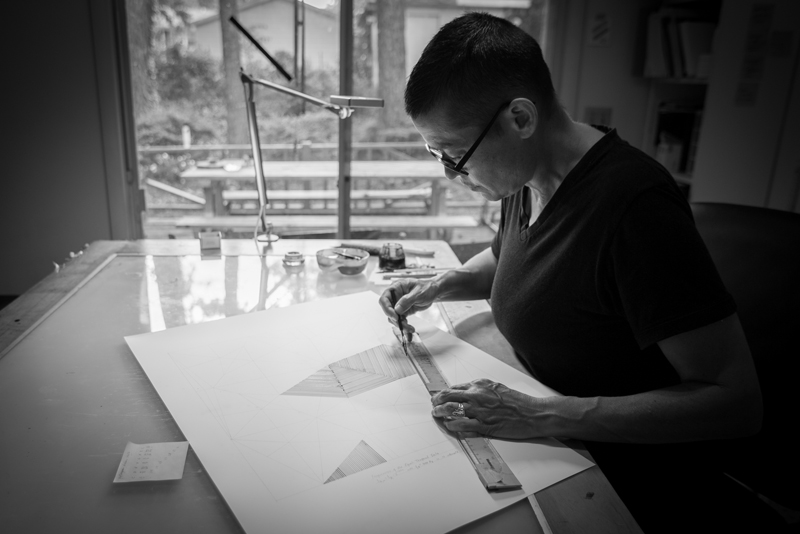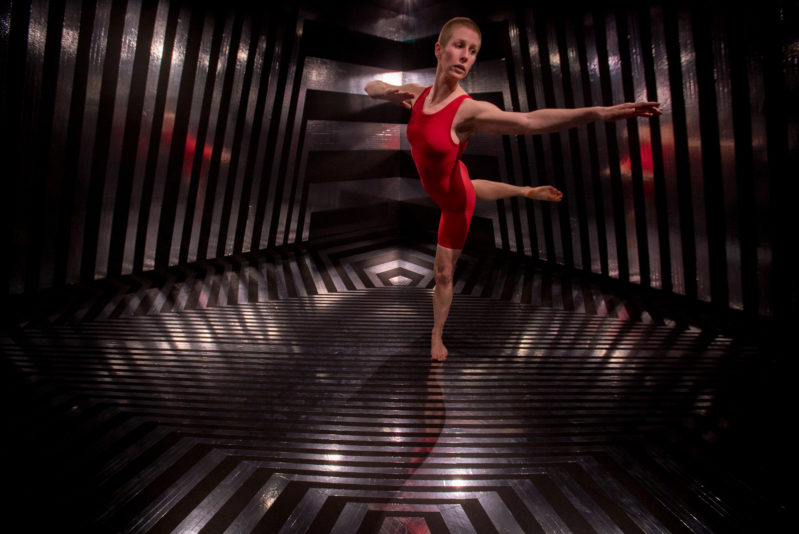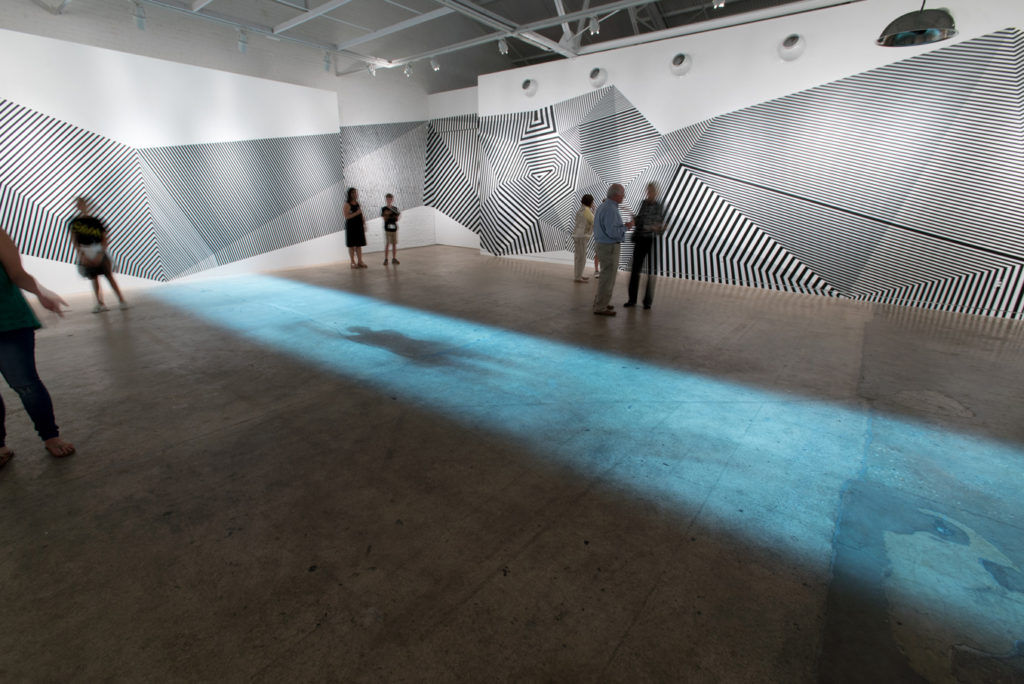Nothing excites Heather Gordon like old Duke Forest archives do. (“Forestry porn,” she calls it.) Except maybe the question of whether a copy is inherently worse than its original. Or the fear of unperceived existence and dying into oblivion. Or a lot of things, actually.
Gordon, a visiting artist at Duke’s Rubenstein Arts Center, is blending data and art through origami folding patterns. She doesn’t usually fold her designs into three-dimensional figures (“I hate sculptures”), but the outcome is nevertheless just as—perhaps even more—exciting that way.

Photo by Michelle Lotker
Gordon happened to stumble upon the idea simply by proceeding through day-to-day life. Namely, she found herself growing increasingly frustrated by online security questions. “They’re always asking stupid things like ‘what’s your favorite pet’s name?’, and I can’t remember what I put 10 years ago,” she said. (And Gordon says she loves all her pets equally.)
Instead, she thought that data visualizations could make for a much more effective security protocol by making use of personal data that only the individual in question would know and remember. “A shape could define you,” she said.
Most recently at the Ruby, Gordon worked with the David M. Rubenstein Rare Book & Manuscript Library and the Duke University Archives to collect old photographs, spreadsheets, letters, and other documents that would contribute to her arts project. Gordon says she knew it was something she had to do when she found an archived letter addressed to Duke’s Dr. Clarence Korstian reading, “Thanks very much for the two shipments of twigs.”
But what was most artistically compelling to Gordon was the light intensity data. Using the documented entries and calculations, she noticed that there were four quadrants in each plot, with 10 readings in each quadrant. Given this, Gordon used a compass to create a series of concentric arcs reminiscent of ripples in a pond. The final product put all four quadrants together to create a painting.

Photo by Robert Zimmerman
The second half of the Ruby project is directly linked to its title, UNLESS. Inspired by Dr. Seuss’ The Lorax, Gordon took the word “UNLESS,” converted each letter into its respective ASCII value, and mapped those numbers into a tree pattern. As in The Lorax, she hoped to tackle issues of resource management and climate change and the idea that unless something is done, climate collapse remains imminent.
For the final product, Gordon used tape to display the tree patterns in colored stripes onto the glass windows of the Ruby. The trees will remain on display into Spring 2020.

Photo by Robert Zimmerman
Yet Gordon’s portfolio neither begins nor ends with UNLESS.
For instance, she’s created an installation called ECHO, inspired by an old personal project of mapping a series of mostly failed “intimate communications” over the course of a year. “I realized I was just seeing what I wanted to see,” Gordon said, reflecting on the project. And thus ECHO was born as an examination of self-awareness, reflection, and authenticity.
The installation itself used strips of mirror tape in a pattern derived from dates of correspondence with Gordon’s close friends. With dancer Justin Tornow, she also put on a dance performance within the space. Unintentionally, ECHO also became a case study in the perception of copies versus originals; a hundred or so audience members chose to crowd around a tiny door to watch Tornow dance, even though the exact same performance was being broadcast live on TVs just a few feet away.

Photo courtesy of Heather Gordon
In another project, titled And Then The Sun Swallowed Me, Gordon revisits a childhood fear: “I was obsessed with the idea that the sun could go into supernova at any moment, and you wouldn’t know,” she explained. Even now, a similar panic persists. “I’m afraid of unperceived existence,” Gordon said. “No one will know about me 3,000 years later, and I stress about it.”
The folding pattern was made using the atomic radii of elements in suns that are capable of supernovas. Wrapped in black tape around the walls of a large room, the installation is explosive. In the center, a projection shows a swimmer swimming, though moving neither forward nor backward. It’s a Sisyphian swimmer, Gordon explains, forced to go through the motions but unable to find purpose.

Photo courtesy of Heather Gordon
Gordon finds connections where most people can’t. There has long existed a gap between the sciences and the arts, but she seems to suggest that there need no longer be. And she also somehow manages to blend philosophy and existentialism quite gracefully with humor, youthfulness, and creativity.
In essence, Gordon knows that there’s a lot in this world that’s worth freaking out over, but she handles it quite expertly.

